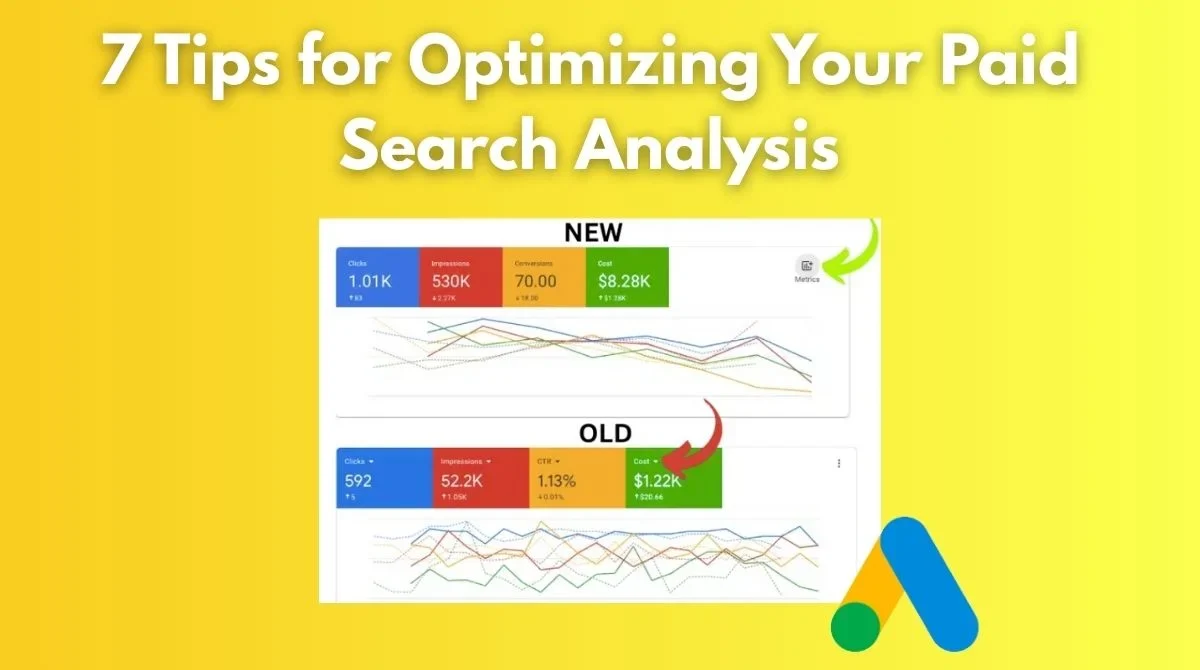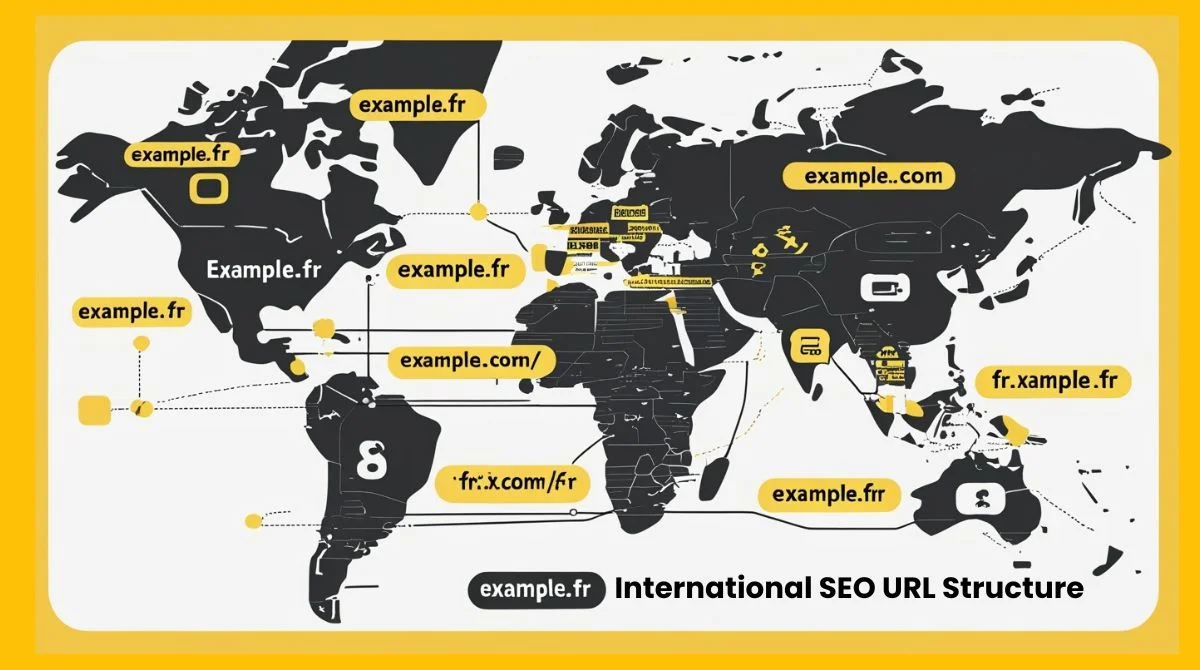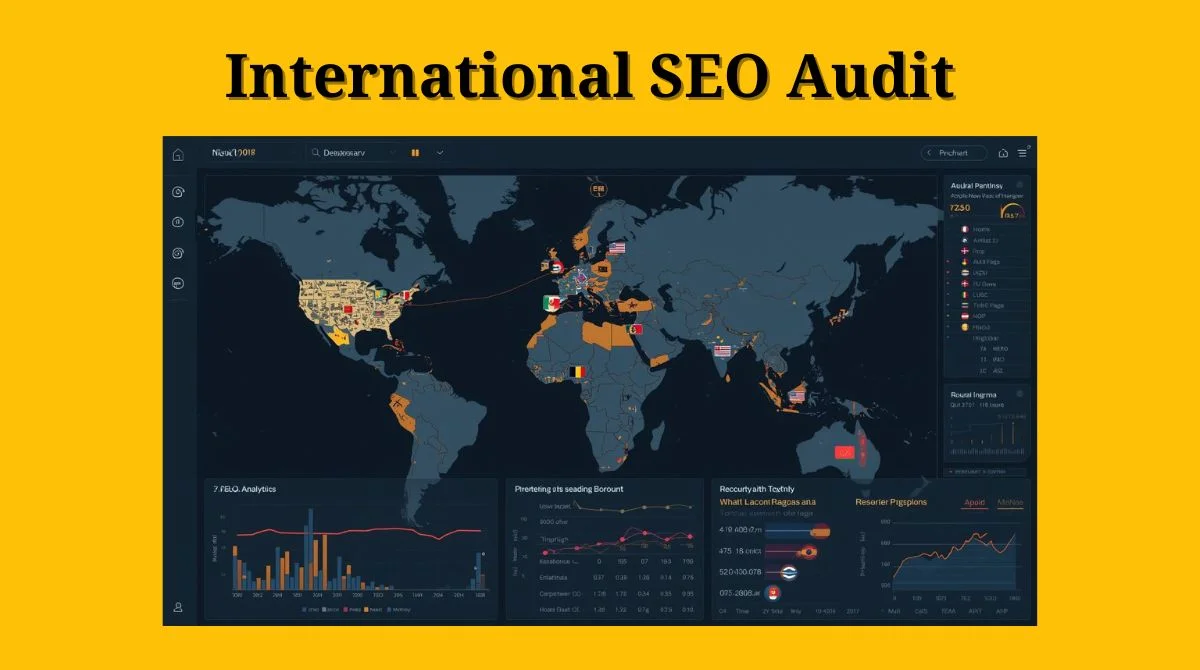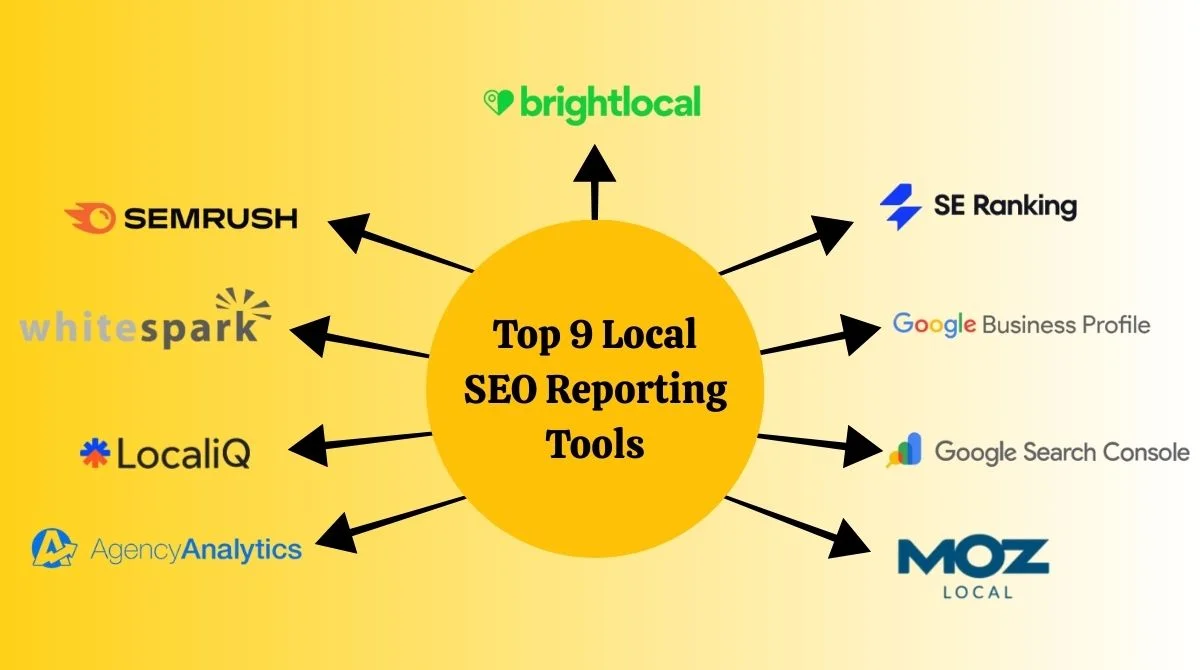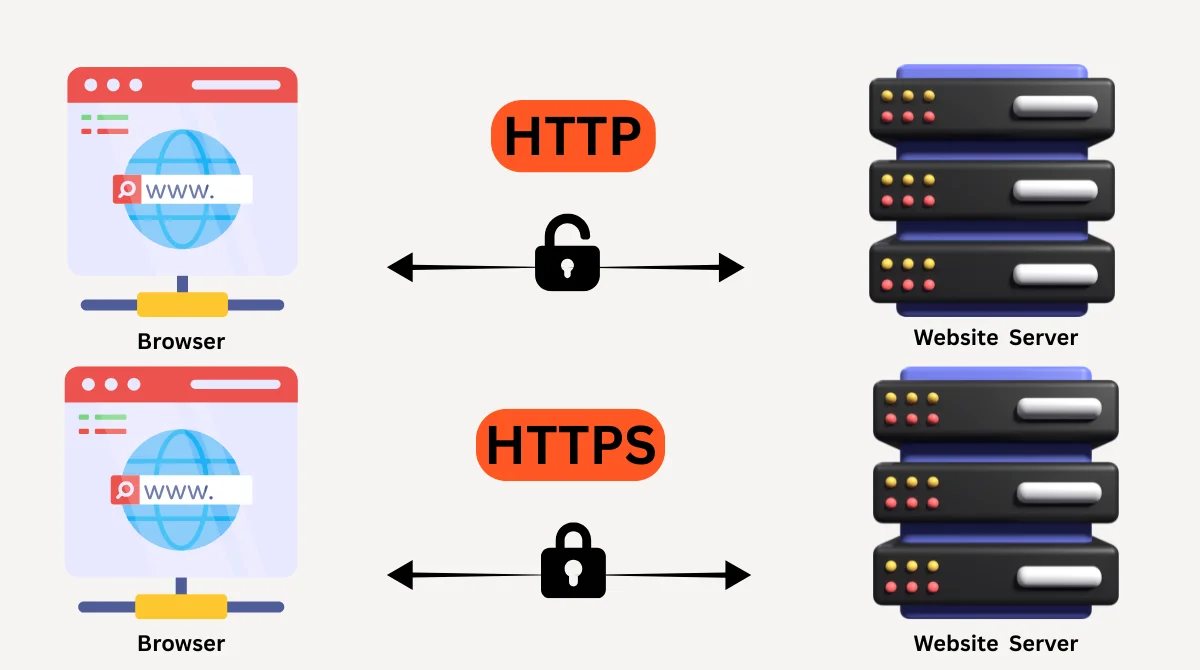- Why Paid Search Analysis Matters?
- Tip 1: Focus on Conversion-Based Metrics
- Tip 2: Segment Your Data for Deeper Insights
- Tip 3: Master Key Performance Indicators (KPIs)
- Tip 4: Implement Regular Performance Reviews
- Tip 5: Optimize for Voice Search and Modern Trends
- Tip 6: Use Advanced Analytics Tools
- Tip 7: Take Action Based on Your Analysis
- Common Paid Search Analysis Mistakes to Avoid
- Setting Up Your Analysis Framework
- Advanced Analysis Techniques
- Conclusion
Analyzing paid search is fundamental to running effective digital ad campaigns. Without proper analysis, you may end up using your budget with no clear strategy.
By tracking key performance indicators (KPIs), segmenting data, and taking actionable insights from results, you can continuously refine and improve your paid search campaigns.
Understanding how to analyze your paid search data effectively can make the difference between profitable campaigns and wasted ad spend. This guide will walk you through seven essential tips to optimize your paid search analysis and drive better results.
Why Paid Search Analysis Matters?
Paid search analysis helps you understand what’s working and what isn’t in your campaigns. It reveals which keywords drive conversions, which ads resonate with your audience, and where you’re losing money.
The overall average cost per lead in Google Ads across all industries went from $66.69 in 2024 to $70.11 in 2025, indicating a 5.13% increase. With rising costs, effective analysis becomes even more critical for maintaining profitability.
Tip 1: Focus on Conversion-Based Metrics
Start with the conversion tracking setup
Turn on conversion tracking in Google Ads to determine which keywords, ads, or campaigns are driving the strongest performance. And make more informed decisions from there. Use conversion tracking codes, tags, or pixels to measure the impact of your campaigns accurately.
Key conversion metrics to track:
- Conversion rate.
- Cost per conversion.
- Return on ad spend (ROAS).
- Conversion value.
Don’t just look at clicks and impressions. These vanity metrics don’t tell you if your campaigns are actually driving business results. Focus on metrics that directly impact your bottom line.

Tip 2: Segment Your Data for Deeper Insights
Break down performance by different dimensions:
- Device type (mobile, desktop, tablet).
- Time of day and day of week.
- Geographic location.
- Audience demographics.
- Campaign type.
Segmentation reveals hidden patterns in your data. You might discover that mobile users convert better on weekends, or that certain locations have higher conversion rates.
Use audience segmentation effectively
Create custom audiences based on user behavior, demographics, and interests. This allows you to analyze performance for specific user groups and optimize accordingly.
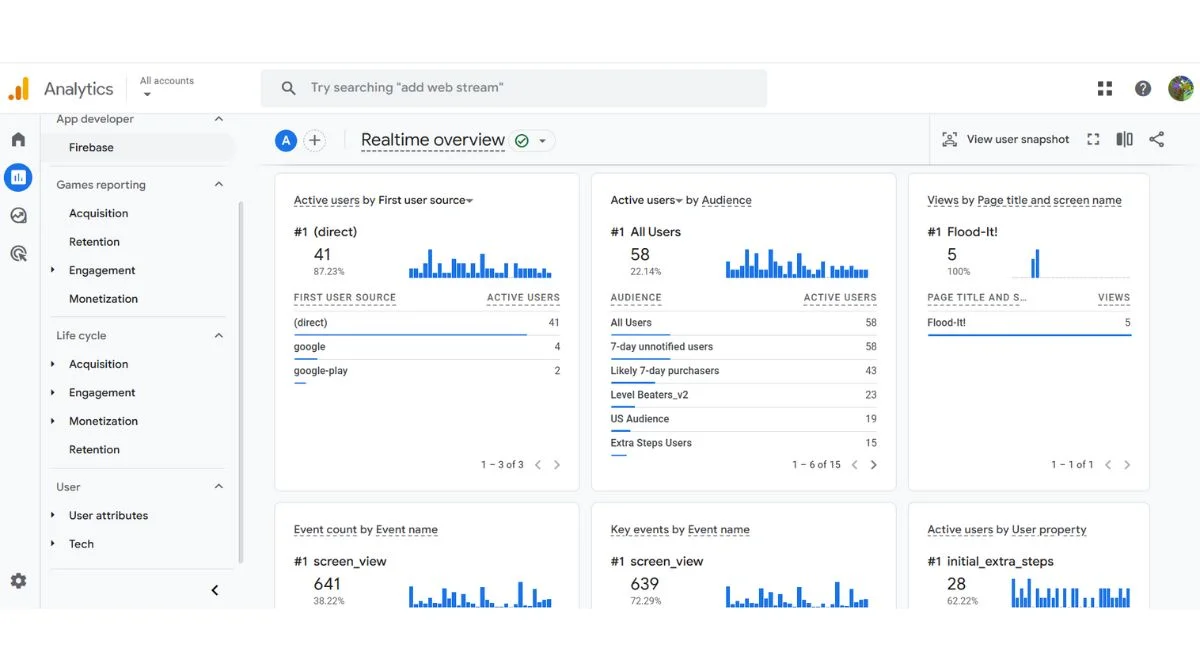
Tip 3: Master Key Performance Indicators (KPIs)
Essential KPIs for paid search analysis
ROAS and Cost per Conversion are definitely key metrics for evaluating ad performance, but they don’t give the complete picture. Since ROAS only reflects the revenue-to-cost ratio, it’s equally important to consider the overall number of conversions.
Primary KPIs to monitor:
- Click-through rate (CTR).
- Quality Score.
- Impression share.
- Average position.
- Cost per click (CPC).
Secondary KPIs for deeper analysis:
- Search impression share lost to budget.
- Search impression share lost to rank.
- Average time on site.
- Bounce rate.
Each KPI tells a different story about your campaign performance. Use them together to get a complete picture.
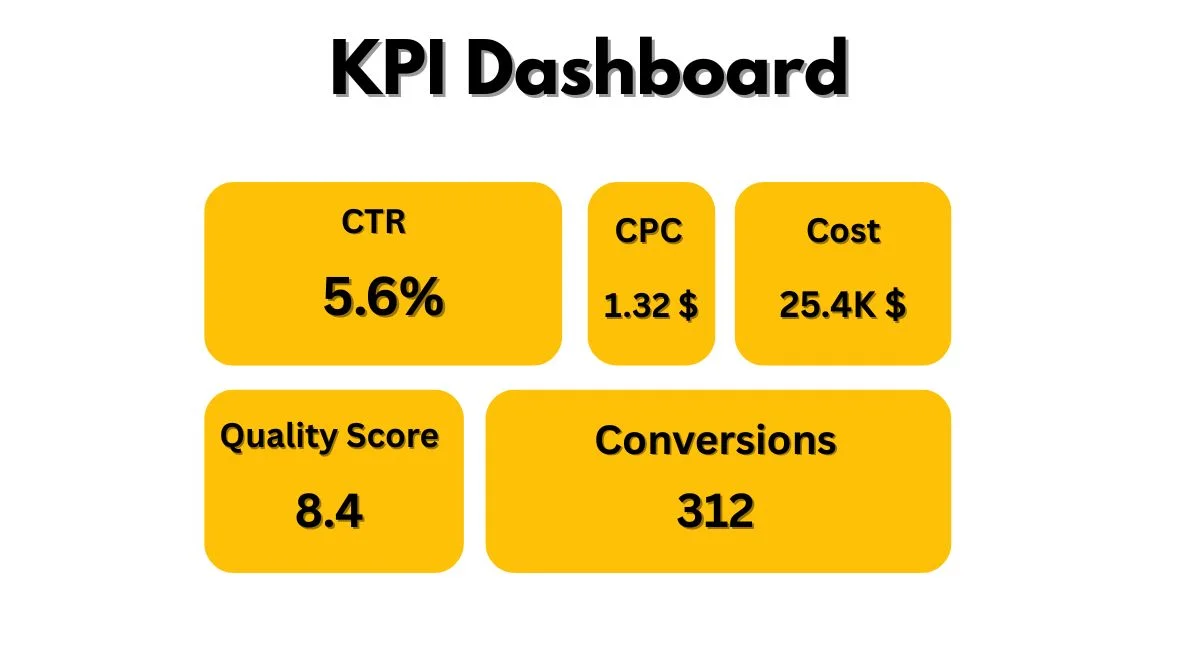
Tip 4: Implement Regular Performance Reviews
Set up automated reporting schedules
Create weekly, monthly, and quarterly reports to track performance trends. Automated reports ensure you never miss important changes in campaign performance.
What to include in performance reviews:
- Period-over-period comparisons.
- Goal achievement analysis.
- Budget utilization rates.
- Competitive positioning changes.
Identify performance fluctuations quickly
Identifying the underlying questions you want to answer helps to streamline the analysis and optimization process. Continuing with our example, let’s say you know that the landing pages in your campaigns haven’t changed recently, so it makes more sense to look at irrelevant search terms when performance drops unexpectedly.
Tip 5: Optimize for Voice Search and Modern Trends
Adapt to changing search behaviors
Voice search is projected to remain a major PPC trend for businesses and marketers in 2025. To make campaigns more effective for voice queries, include voice-friendly keywords, especially long-tail, conversational phrases that reflect natural speech.
Voice search optimization strategies:
- Use natural language keywords.
- Focus on question-based queries.
- Optimize for local search intent.
- Create conversational ad copy.
Stay ahead of algorithm changes
Google frequently updates its algorithms and features. Keep track of changes that might affect your campaigns and adjust your analysis accordingly.
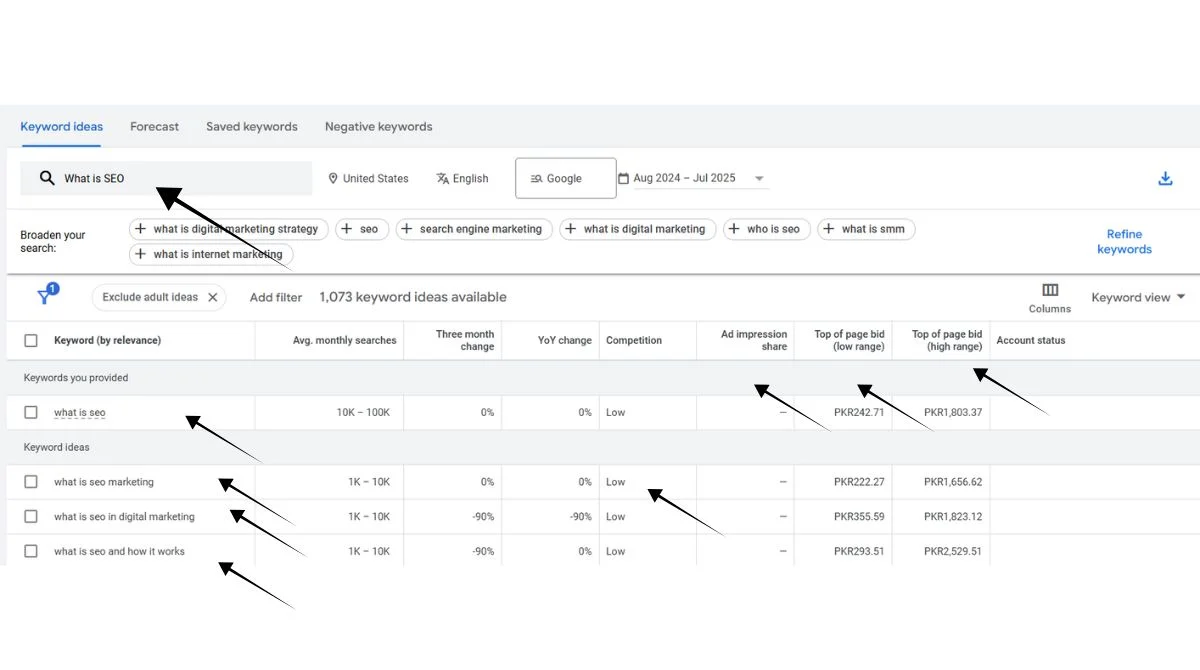
Tip 6: Use Advanced Analytics Tools
Beyond basic platform analytics
While Google Ads provides basic analytics, external tools can offer deeper insights and better visualization options.
Recommended analytics approaches:
- Cross-platform attribution analysis.
- Customer journey mapping.
- Lifetime value calculations.
- Predictive analytics implementation.
Connect your data sources
Link Google Ads with Google Analytics, your CRM, and other marketing platforms. This provides a comprehensive view of your customer’s journey from the initial click to the final conversion.
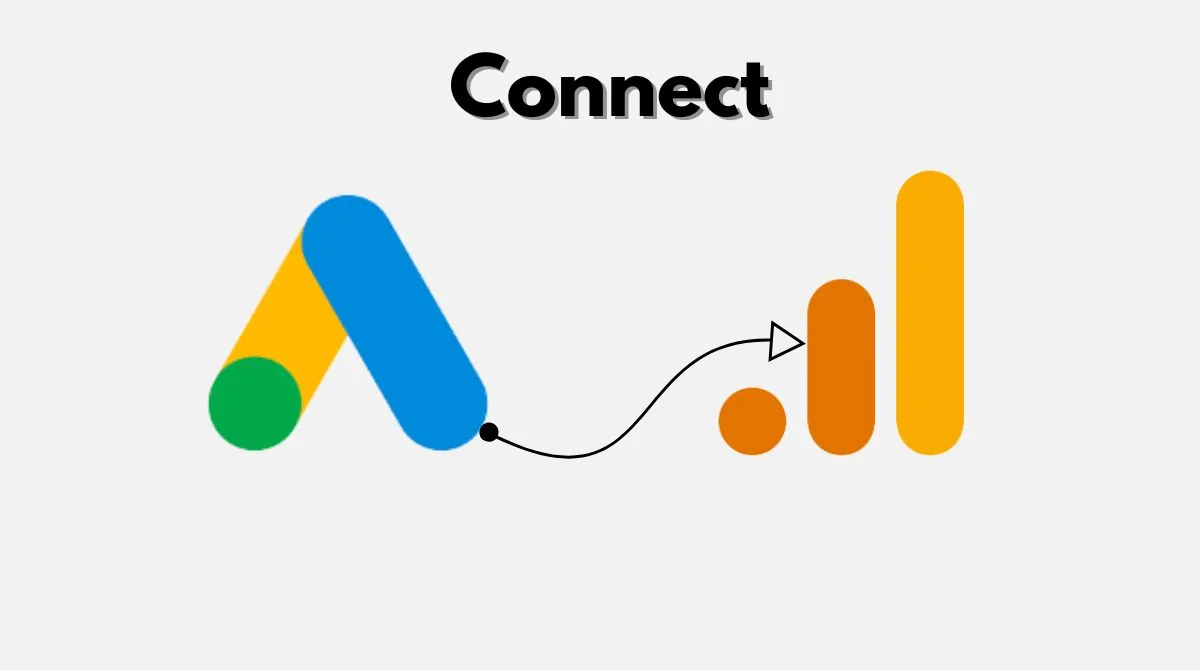
Tip 7: Take Action Based on Your Analysis
Turn insights into optimizations
Analysis without action is worthless. Create a systematic approach to implementing changes based on your findings.
Common optimization actions:
- Pause underperforming keywords.
- Increase bids on high-converting terms.
- Adjust ad copy based on performance data.
- Refine targeting parameters.
- Optimize landing pages for better conversion rates.
Test and measure everything
Implement A/B tests for ad copy, landing pages, and bidding strategies. Use your analysis to inform test hypotheses and accurately measure results.
Create optimization workflows
Establish regular optimization schedules. Weekly keyword reviews, monthly campaign audits, and quarterly strategy assessments help maintain campaign health.
Common Paid Search Analysis Mistakes to Avoid
- Looking at data in isolation: Don’t analyze metrics without context. Always compare performance to previous periods, industry benchmarks, and business goals.
- Ignoring statistical significance: Make sure you have enough data before making decisions. Small sample sizes can lead to incorrect conclusions.
- Focusing only on last-click attribution: Modern customer journeys involve multiple touchpoints. Use attribution models that reflect your actual customer behavior.
Setting Up Your Analysis Framework
- Define clear objectives: Begin by defining clear goals for your paid search campaigns. Common goals include: … Match your goals to specific KPIs like conversion rates, ROAS, or click-through rates.
- Create standardized reporting templates: Consistent reporting formats make it easier to spot trends and share insights with stakeholders.
- Establish performance benchmarks: Use historical data and industry standards to set realistic performance expectations.
Advanced Analysis Techniques
Cohort analysis for user behavior
Track user groups over time to understand how different segments perform throughout their lifecycle.
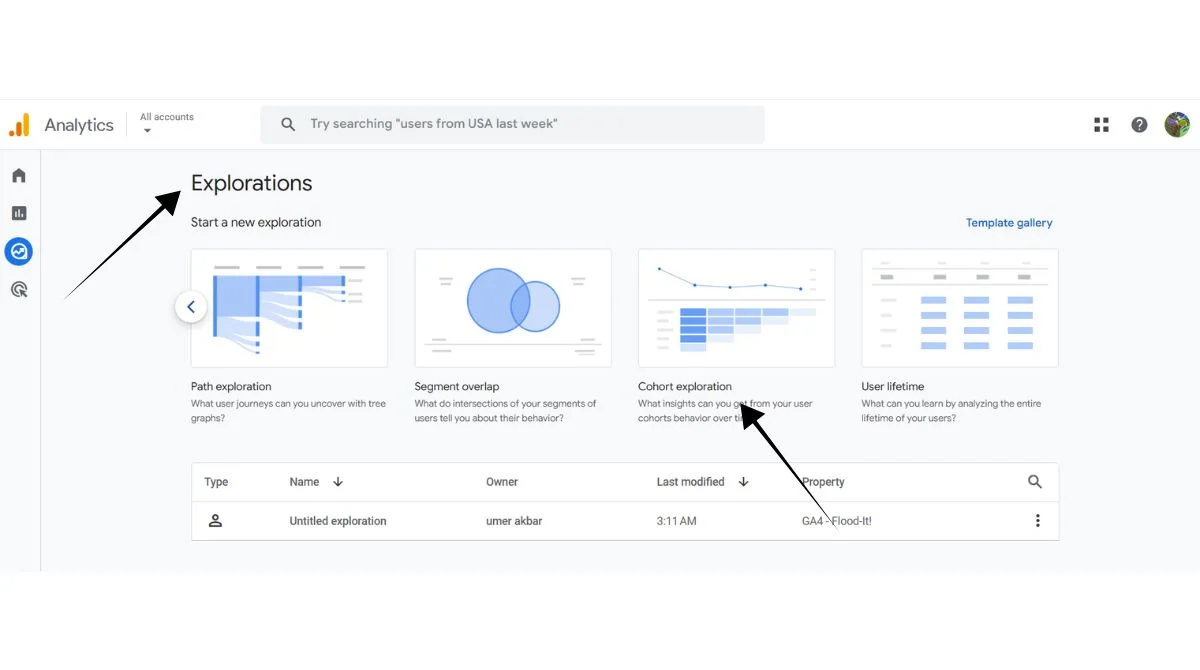
Attribution modeling
Move beyond last-click attribution to understand the full customer journey impact of your paid search efforts.

Predictive analytics
Leverage past data to forecast future results and spot optimization opportunities early on.
Conclusion
Optimizing your paid search analysis requires a systematic approach combining the right metrics, tools, and processes. Start with conversion-focused metrics, segment your data for deeper insights, and always take action based on your findings. Remember that paid search analysis is an ongoing process, not a one-time task. By implementing these seven tips, you’ll build a robust framework that helps optimize campaigns, reduce costs, and maximize return on investment.

